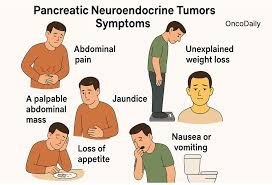Evolving Treatments for Pancreatic Neuroendocrine Cancer (PNETs)

What are PNETs?
Pancreatic neuroendocrine tumours, or PNETs, are cancers that arise from the endocrine cells in the pancreas. PNETs gained a lot of attention after the late Apple co-founder, Steve Jobs, was diagnosed with the condition. Before that, not many people knew about them. Unlike the common type of pancreatic cancer known as adenocarcinoma, PNETs are rare. They account for less than 3% of all pancreatic tumours.
Arising from the endocrine cells in the pancreas, these cancers can be hormone secreting or non-hormone secreting. Some of these hormones are active or functional and they cause hormone-related symptoms while others are inactive or non-functional. The majority of PNETs are nonfunctional tumours. Non-functional PNETs generally show no symptoms in the early stage and by the time they are diagnosed, they are often in the advanced stage.
Due to the rarity of PNETs and the scarcity of reliable medical evidence in the treatment, managing patients with this condition can be very challenging. Specialists have to rely on their clinical experience and judgment.
A silent killer
It does not help that PNETs may not have signs or symptoms. This means the cancer could be diagnosed late, at which point surgery may no longer be an option. Are also complex. They can appear in various guises and differ greatly in the speed of growth. Their speed of growth can switch from slow to fast or from fast to slow.
This is why some patients may live for years, even after the tumour has spread to the liver or other parts of the body. Others may not, if their slow-growing suddenly turn aggressive. This observation, known medically as the flip-flop phenomenon, describes the unpredictability and interchangeability of cancer biology. Predicting the speed of เว็บพนันออนไลน์ UFABET สมัครง่าย โปรโมชั่นมากมาย growth of these tumours remains an inexact science at best.
What are the symptoms?
As mentioned, majority of patients often experience no symptoms, especially the non-functional. When PNET-related symptoms do occur, they are often non-specific. It is therefore not surprising that proper diagnosis is frequently delayed for a long time.
On the other hand, functional may have symptoms that related to the hormones that are secreted by the tumour. They may feel tired, dizzy or lightheaded, nervous or anxious, abdominal pain, nausea, watery diarrhoea, increased thirst, etc., depending on the type of hormone the tumour makes.
Non-functioning tumours do not produce any hormones so they do not cause any hormone-related symptoms. As a result, these tumours are typically diagnosed once the tumour is advanced and is causing mass effect related symptoms such as pain or jaundice or gastric outlet obstruction.
Treatment options
Surgery is not a straightforward medical decision. It is generally not recommended if the cancer has spread. It is not surprising to receive mixed opinions from other oncologists and surgeons.
From cumulative experience worldwide, we know that extensive surgery can prolong the survival of patients, provided it can be performed safely. However, surgery is risky and also comes with a high risk of tumour recurrence.